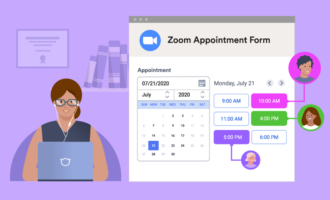Teachers are responsible for more than teaching history lessons and math equations. They also instill in their students critical thinking skills, empathy, and a connection to society.
With that comes uncomfortable conversations. In an age where polarizing content about race, gender, and immigration proliferates, teachers do a disservice to students if they fail to broach these challenging topics. Students need the language, space, and voice to talk about difficult ideas in order to learn about themselves and the people around them.
Teachers can use surveys and forms in the classroom to develop a private space for students to express their opinions. These tools can also help teachers understand student biases, which can help guide future lessons.
Trust and safety in the classroom
Before jumping into subjects like slavery, LGBTQ rights, or deportations, you first have to establish a safe classroom community built on trust and respect.
One way to build this mutual trust in your class is to get to know your students. You can do this by checking in periodically throughout the year to see if they feel valued, appreciated, and respected. Maurice J. Elias at Edutopia recommends asking questions that gauge where students are socially and emotionally in the classroom. Teachers can ask these questions via digital forms so that all students can respond privately.
And if you follow up on these questions with supportive discussion, you can help students build reflection skills, resilience, and trust.
If teachers fail to recognize that a student’s emotional well-being or social standing is floundering, they risk allowing that student to experience further trauma, says Carrie Gaffney at Teaching Tolerance. Teachers can avoid retraumatizing kids in class by learning about trauma-informed pedagogy and ways that trauma can manifest in lesson plans.
A lesson on slavery, for instance, might seem like just another history lesson, but the generational impact and today’s continuous racism aren’t history. They affect students’ lives on a daily basis. Treating your students as whole children, with a social location in and out of class, is the first step to being able to broach sensitive topics.
Knowing your students in the context of a safe class environment will also help you decide which topics to cover.
For example, if you know that some of your gender nonconforming students are feeling isolated, it might be time for a lesson on LGBTQ history. Results from a 2018 survey showed that “only 19.8 percent of students had been taught a positive representation of LGBTQ people or history in the past year,” says Cory Collins at Teaching Tolerance. “More than 60 percent didn’t hear about LGBTQ issues at all.” When you know how your students are feeling and why, you’ll be able to shape relevant lessons on topics that impact students.
Teachers don’t build relationships only by using surveys — but surveys can be a quick way to touch base with students. The online nature of surveys gives students a more private method to report what they are feeling and a safe space in which to answer personal questions.
Use forms to gather student responses to class material
Surveys and forms can also be used to elicit student responses to recent news stories.
The Anti-Defamation League gives an example of the resignation of state senator Frank Artiles. He resigned after using derogatory language toward women and black people. A political event like this can be a starting point for asking students how they feel about slurs and offensive jokes and how they think they should respond when facing prejudice in their own lives.
Suggested questions include
- Do you know what a slur is?
- Who is usually targeted by slurs?
- How do you think someone should be held accountable for their words?
- What about a peer at school?
- What about a political leader?
You can gather student responses and share them in a group discussion.
Jill Anderson at the Harvard Graduate School of Education say books are also great starting points for opening up conversations on sensitive topics, even for young learners. She notes that it’s necessary for teachers to lay the ground rules and acknowledge the challenging nature of these discussions.
Teachers can use other sources as well, such as items from social media, blog posts, or even video games to elicit thoughts on justice issues.
Check your own biases first
Many teachers don’t undergo any training on how to handle topics that are painful for students, and they can be slow to admit their own implicit biases.
Teacher Melissa Garcia reflects on a time when she assumed a student with baggy clothes and long hair would be behind academically and probably be a challenge in class. Instead, he was a gifted student who ended up calling her out on her bias. Garcia reminds teachers that biases are subconscious and thus outside your control, but they need to be checked.
When obtaining feedback from your students, ask how they feel about your biases. Do your students think everyone in the class is treated equally? How do they feel about your approach to difficult topics? Your students might see some unchecked biases that you’re missing.
It’s difficult to recognize your own privilege, but humbly sharing that process with your students will ease defensiveness and allow for more engaging conversations. Injustice topics are messy. You must be aware of your own social location and perspective before guiding young learners in developing their own thoughts on these matters.








































































































Send Comment: